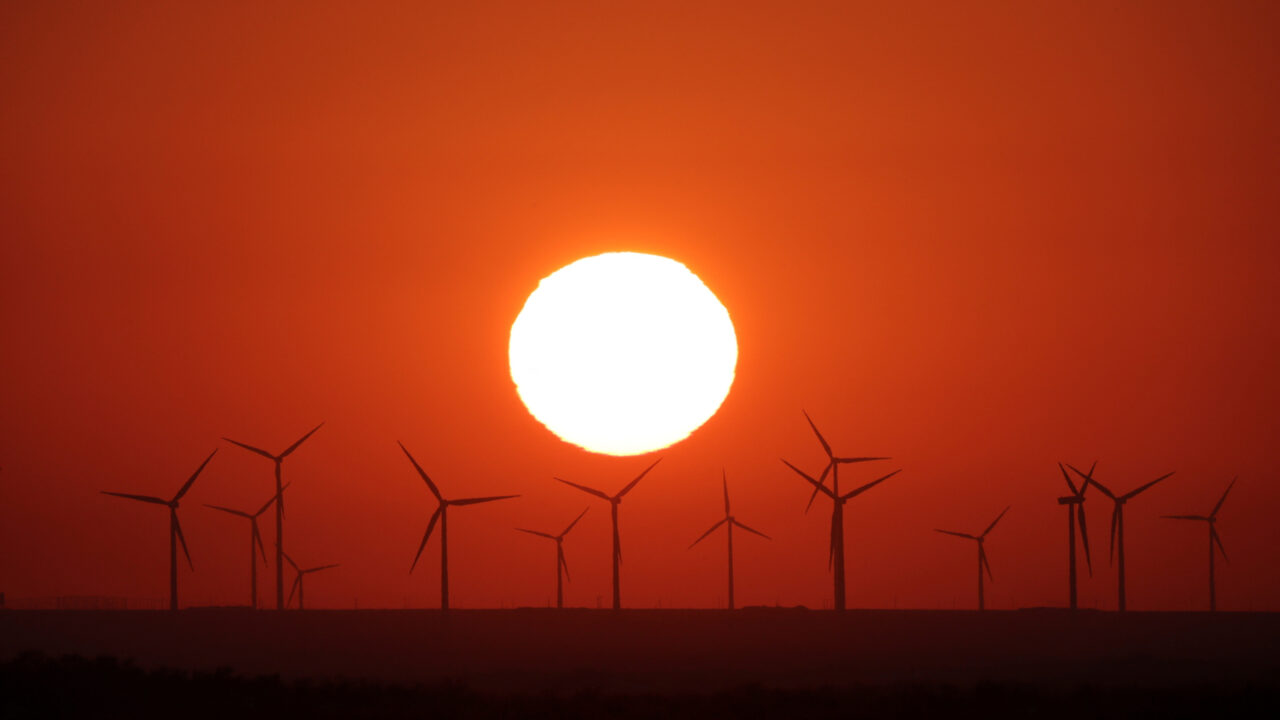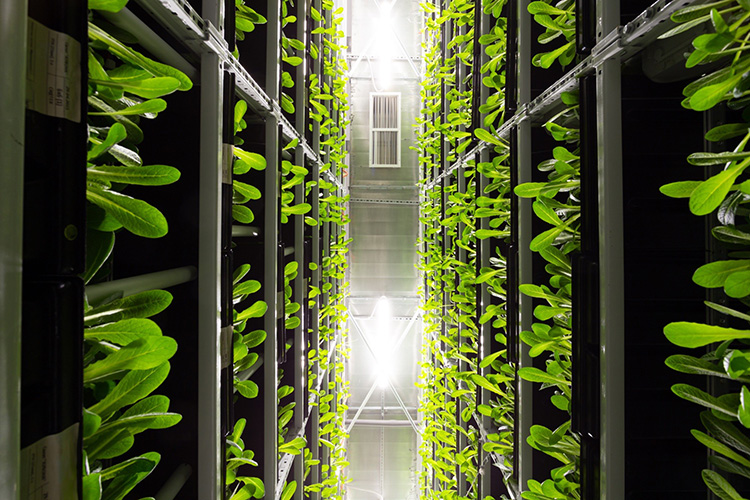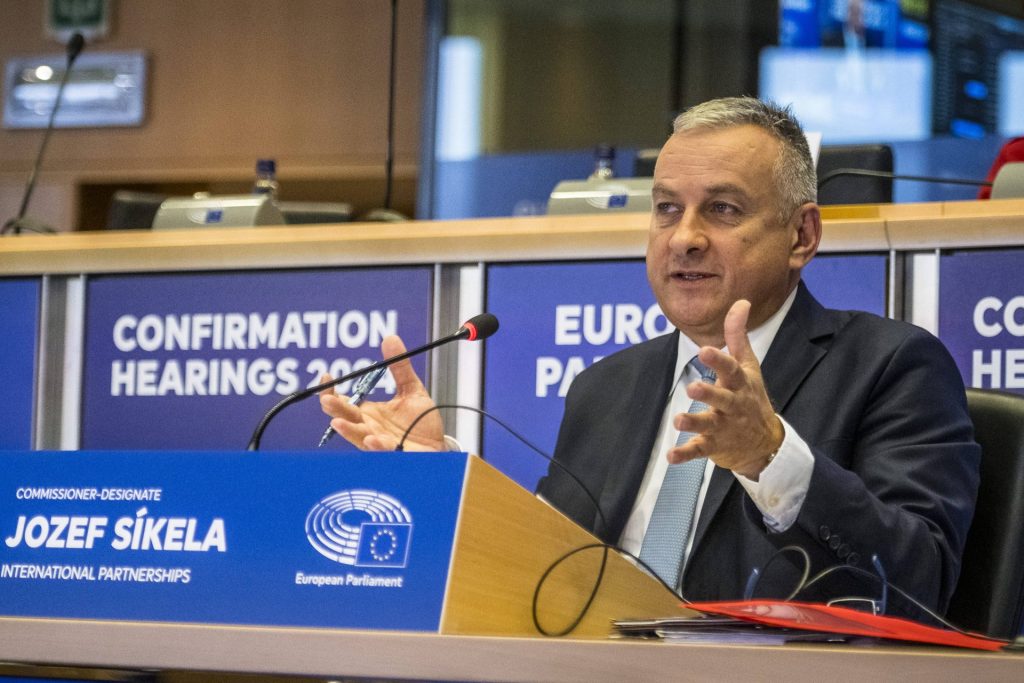Report on the European Union’s 2025 Vision for Agriculture and Food and its Implications for the Sustainable Development Goals
Executive Summary
In February 2025, the European Commission introduced the Vision for Agriculture and Food, a policy framework intended to address farmer concerns and secure the future of European food systems. This report finds that the new Vision marks a significant regression from the sustainability-oriented 2020 Farm to Fork Strategy. By prioritizing techno-fixes and a narrow “decarbonization” agenda over a comprehensive “defossilization” of the agricultural sector, the Vision fails to adequately address critical environmental, social, and economic challenges. This policy shift directly undermines the EU’s ability to meet its commitments under several Sustainable Development Goals (SDGs), including SDG 2 (Zero Hunger), SDG 3 (Good Health and Well-being), SDG 7 (Affordable and Clean Energy), SDG 12 (Responsible Consumption and Production), SDG 13 (Climate Action), SDG 14 (Life Below Water), and SDG 15 (Life on Land).
A Retreat from Sustainable Production and Consumption (SDG 12)
The Farm to Fork Strategy: A Framework for Sustainability
The 2020 Farm to Fork Strategy represented a landmark attempt to align the EU’s food system with sustainability objectives. Its integrated approach sought to transform the entire food chain, directly supporting the principles of SDG 12 (Responsible Consumption and Production). Key targets included:
- A 50% reduction in the use and risk of chemical pesticides.
- A 50% reduction in the use of more hazardous pesticides.
- A reduction of at least 20% in fertilizer use by 2030.
Initial progress was observed, with NPK fertilizer use dropping by approximately 13% between 2020 and 2022, indicating a positive step towards achieving SDG 12.
The 2025 Vision: A Shift Away from Sustainability Targets
The new Vision abandons the concrete input-reduction targets of its predecessor. The Commission has scrapped the pesticide reduction goals and delayed the Integrated Nutrient Management Action Plan. Instead, the policy promotes technological solutions without binding reduction targets, such as:
- Precision Farming: Data-driven approaches to optimize input use.
- Carbon Farming: Practices intended to sequester carbon in soil, offered as a new income stream for farmers.
- The Farm Sustainability Tool for Nutrients: A digital tool for nutrient management.
While framed as efficiency gains, these techno-fixes have been criticized for reinforcing a dependency on industrial agriculture and shifting power from farmers to agribusiness and technology corporations. This approach fails to drive the systemic change required by SDG 12 and risks locking the sector into unsustainable production models.
Misaligned Climate and Energy Strategies: A Threat to SDG 7 and SDG 13
The Flawed Focus on Decarbonization over Defossilization
A critical flaw in the new Vision is its emphasis on decarbonization (managing emissions after creation) rather than defossilization (eliminating fossil fuels at the source). This focus on carbon capture, storage, and credits fails to address the root cause of agricultural emissions and undermines both SDG 7 (Affordable and Clean Energy) and SDG 13 (Climate Action).
This strategy opens the door to false solutions like “blue ammonia,” a product derived from fossil fuels where emissions are supposedly captured via Carbon Capture and Storage (CCS). This approach not only relies on an underperforming technology but actively entrenches the agricultural sector’s dependence on fossil fuels, running contrary to the goals of SDG 7.
The Environmental Failures of Alternative Fertilizers
Even “green ammonia,” produced using renewable energy, fails to solve the broader environmental crisis linked to synthetic fertilizers. While the production method aligns with SDG 7, the application of these fertilizers on fields still causes significant harm:
- Nitrous Oxide (N₂O) Emissions: N₂O, a greenhouse gas with a warming potential 273 times that of CO₂, is released from fertilized soil. Field application accounts for nearly 60% of all fertilizer-related emissions, directly impacting SDG 13.
- Biodiversity Loss: Nutrient runoff from overuse pollutes waterways, leading to aquatic biodiversity loss (SDG 14 – Life Below Water) and degrades soil health, harming terrestrial ecosystems (SDG 15 – Life on Land).
In contrast, agroecological approaches that utilize natural processes like biological nitrogen fixation offer a genuine path to reducing fertilizer dependency and achieving these SDGs.
The High Cost of Fossil Fuel Dependency on Health, Environment, and Economic Stability
Environmental and Climate Degradation
The EU’s agri-food sector, responsible for 31% of total EU emissions, is deeply entangled with fossil fuels. This dependency has severe consequences that impede progress on multiple SDGs.
- Climate Impact (SDG 13): Synthetic nitrogen fertilizers alone account for over 2% of global GHG emissions. Certain pesticides, like Sulfuryl fluoride, have a Global Warming Potential up to 5,000 times greater than CO₂.
- Environmental Pollution (SDG 6, 14, 15): Agrochemicals degrade soils (SDG 15), pollute waterways (SDG 6 and SDG 14), and harm air quality and biodiversity.
Human Health and Economic Vulnerability
The reliance on fossil-based inputs creates significant risks for human populations and economic systems.
- Health Risks (SDG 3): Agricultural workers and rural communities face serious health risks from exposure to agrochemicals, undermining SDG 3 (Good Health and Well-being).
- Economic Instability (SDG 8): The direct link between agrochemical prices and volatile fossil fuel markets exposes farmers to geopolitical shocks and rising costs. This threatens farmer livelihoods and the stability of their work, a key concern of SDG 8 (Decent Work and Economic Growth).
An Analysis of Policy Beneficiaries and Sustainable Alternatives
Prioritizing Corporate Interests over Farmer Welfare
The 2025 Vision does not serve the interests of European farmers. By promoting costly technologies and speculative carbon markets, the policy benefits large agribusinesses and technology providers while trapping farmers in a cycle of high input costs and market volatility. This approach undermines the goals of ensuring food security and promoting sustainable agriculture (SDG 2 – Zero Hunger) and securing decent work for farmers (SDG 8).
A Path Forward: Agroecology and Systemic Change
A viable and sustainable path forward exists through agroecology, regenerative farming, and localized food systems. These approaches offer a holistic solution that aligns with the Sustainable Development Goals by:
- Reducing reliance on fossil fuels and associated emissions (SDG 7, SDG 13).
- Improving soil health and biodiversity (SDG 15).
- Protecting water resources (SDG 6, SDG 14).
- Strengthening food sovereignty and farmer resilience (SDG 2).
This alternative requires policy frameworks and investment that prioritize ecological health and social equity over corporate profit.
Conclusion: A Critical Juncture for EU Agricultural Policy
The Vision for Agriculture and Food represents a significant missed opportunity to align EU agriculture with its climate and sustainability commitments. By retreating from the ambitious goals of the Farm to Fork Strategy, the EU risks failing farmers, the environment, and its international obligations under the Sustainable Development Goals. As the EU prepares for the 2027 review of the Common Agricultural Policy, there is a critical window to course-correct. A future-proof agricultural policy must move beyond techno-fixes and embrace a genuine transition towards a fossil-free, equitable, and ecologically resilient food system.
Analysis of Sustainable Development Goals in the Article
1. Which SDGs are addressed or connected to the issues highlighted in the article?
-
SDG 2: Zero Hunger
- The article focuses on European agriculture, food systems, and the economic viability of farmers who “feed the continent.” It discusses sustainable agricultural practices, soil health, and the challenges farmers face, which are all central to achieving food security and promoting sustainable agriculture.
-
SDG 3: Good Health and Well-being
- The text explicitly mentions that agrochemicals “can also expose agricultural workers and communities to serious health risks,” directly linking agricultural practices to human health outcomes.
-
SDG 8: Decent Work and Economic Growth
- The article highlights the economic struggles of farmers, citing “rising costs, low profitability, and unfair trade competition.” It discusses how the new EU Vision aims to “increase profitability and income” for farmers, connecting agricultural policy to economic well-being and the sustainability of livelihoods in the agricultural sector.
-
SDG 12: Responsible Consumption and Production
- This is a core theme. The article critiques the EU’s agricultural model for its reliance on “fossil-based” inputs like synthetic fertilizers and pesticides. It details the Farm to Fork Strategy’s goals for reducing these inputs and advocates for a shift towards more sustainable production patterns like agroecology.
-
SDG 13: Climate Action
- The article extensively discusses the climate impact of agriculture. It states that the agri-food sector accounted for “31 percent of total EU emissions” and that synthetic nitrogen fertilizer contributes to “over 2 percent of global greenhouse gas emissions.” It also analyzes the climate impact of specific greenhouse gases like nitrous oxide and Sulfuryl fluoride and discusses strategies like decarbonization and defossilization.
-
SDG 14: Life Below Water
- The impact of agricultural runoff on water systems is mentioned. The article notes that agrochemicals “pollute waterways” and that the overuse of fertilizers contributes to “aquatic biodiversity loss,” which are key concerns of this SDG.
-
SDG 15: Life on Land
- The article addresses the effect of industrial agriculture on terrestrial ecosystems. It mentions that agrochemicals “degrade soils” and cause “land… biodiversity loss.” Conversely, it promotes agroecological approaches that “restore soil health.”
2. What specific targets under those SDGs can be identified based on the article’s content?
-
Target 2.4: By 2030, ensure sustainable food production systems and implement resilient agricultural practices that increase productivity and production, that help maintain ecosystems, that strengthen capacity for adaptation to climate change, extreme weather, drought, flooding and other disasters and that progressively improve land and soil quality.
- The article’s entire discussion revolves around making European food systems sustainable by moving away from fossil-fuel dependency and adopting practices like “agroecology” and “regenerative farming” to “restore soil health.”
-
Target 3.9: By 2030, substantially reduce the number of deaths and illnesses from hazardous chemicals and air, water and soil pollution and contamination.
- The article points to this target by stating that agrochemicals “expose agricultural workers and communities to serious health risks” and “pollute waterways, and harm air quality.”
-
Target 8.4: Improve progressively, through 2030, global resource efficiency in consumption and production and endeavour to decouple economic growth from environmental degradation.
- The article discusses the need to reduce reliance on “costly inputs” and move away from a “fossil-based system.” The debate between the Farm to Fork strategy (focused on input reduction) and the new Vision (focused on techno-fixes) is a direct reflection of different approaches to achieving this target.
-
Target 12.4: By 2020, achieve the environmentally sound management of chemicals and all wastes throughout their life cycle… and significantly reduce their release to air, water and soil in order to minimize their adverse impacts on human health and the environment.
- This target is explicitly addressed through the Farm to Fork Strategy’s goals to “reduce the use and risk of pesticides and the use of more hazardous pesticides by 50 percent, and… reduce the use of fertilizers by at least 20 percent by 2030.”
-
Target 13.2: Integrate climate change measures into national policies, strategies and planning.
- The article analyzes and critiques EU-level policies like the “Farm to Fork Strategy” and the “Vision for Agriculture and Food” based on their effectiveness in meeting climate commitments and reducing the agricultural sector’s significant greenhouse gas emissions.
-
Target 14.1: By 2025, prevent and significantly reduce marine pollution of all kinds, in particular from land-based activities, including marine debris and nutrient pollution.
- The article connects to this target by highlighting how the overuse of fertilizers leads to nitrous oxide emissions and contributes to “aquatic biodiversity loss” and the pollution of “waterways.”
-
Target 15.3: By 2030, combat desertification, restore degraded land and soil, including land affected by desertification, drought and floods, and strive to achieve a land degradation-neutral world.
- This is referenced by the article’s mention that current agrochemical use can “degrade soils” and its promotion of alternative approaches like agroecology that can “restore soil health.”
3. Are there any indicators mentioned or implied in the article that can be used to measure progress towards the identified targets?
-
Reduction targets for agricultural inputs: The article explicitly states the Farm to Fork Strategy’s goals, which serve as direct indicators.
- Indicator: “reduce the use and risk of pesticides and the use of more hazardous pesticides by 50 percent.”
- Indicator: “reduce the use of fertilizers by at least 20 percent by 2030.”
-
Harmonised Risk Indicator 1 (HRI 1): This is a specific, named indicator used by the EU to measure pesticide risk.
- Indicator: The article reports a decrease in pesticide use and risk “from 77 to 48 HRI 1,” representing a “38 percent decrease.”
-
Fertilizer consumption data: The article provides a concrete figure on the reduction of fertilizer use.
- Indicator: “between 2020 and 2022, the use of NPK fertilizers in the EU dropped by approximately 13 percent.”
-
Greenhouse gas emissions from the agricultural sector: The article provides data on the sector’s contribution to total emissions.
- Indicator: The agri-food sector’s share of total EU emissions, which was “31 percent” in 2020.
- Indicator: The contribution of synthetic nitrogen fertilizer to global GHG emissions, cited as “over 2 percent.”
-
Global Warming Potential (GWP): The article uses GWP to illustrate the climate impact of specific agrochemicals.
- Indicator: The GWP of Nitrous oxide is “273 times that of CO2.”
- Indicator: The GWP of Sulfuryl fluoride is up to “5,000 times greater than CO₂.”
-
Farmer Income and Profitability: While not quantified with a specific number, this is a key implied indicator for assessing the economic sustainability of farming.
- Indicator: The article repeatedly refers to farmers’ “low profitability” and the goal of policies to “increase profitability and income.”
4. Table of SDGs, Targets, and Indicators
| SDGs | Targets | Indicators |
|---|---|---|
| SDG 2: Zero Hunger | 2.4: Ensure sustainable food production systems and implement resilient agricultural practices. |
|
| SDG 3: Good Health and Well-being | 3.9: Substantially reduce illnesses from hazardous chemicals and pollution. |
|
| SDG 8: Decent Work and Economic Growth | 8.4: Improve global resource efficiency and decouple growth from environmental degradation. |
|
| SDG 12: Responsible Consumption and Production | 12.4: Achieve environmentally sound management of chemicals and reduce their release. |
|
| SDG 13: Climate Action | 13.2: Integrate climate change measures into national policies and strategies. |
|
| SDG 14: Life Below Water | 14.1: Prevent and reduce marine pollution from land-based activities, including nutrient pollution. |
|
| SDG 15: Life on Land | 15.3: Restore degraded land and soil. |
|
Source: ciel.org







